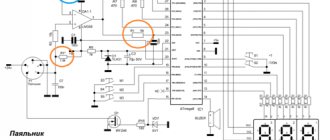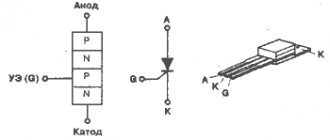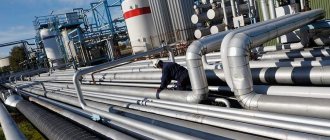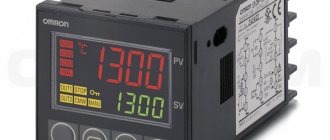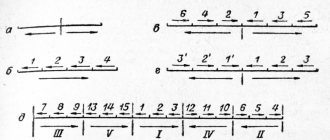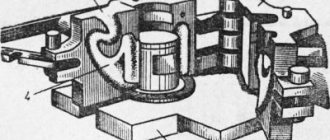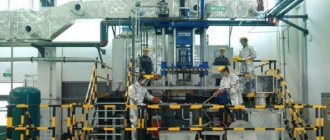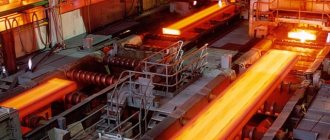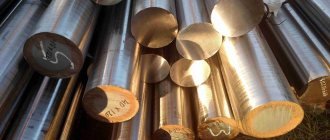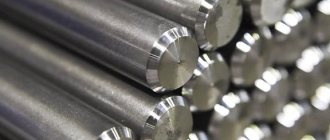Soldering stations are mainly used in professional environments, although anyone can purchase them. This is quite powerful equipment that is suitable for many different operations, including the restoration of complex equipment. The station can include not only a standard soldering iron, but also a hot air dryer.
In addition, any station has a so-called control module and galvanic isolation from the network. The presence of galvanic isolation minimizes possible negative consequences from soldering (black smoke or electric shock).
The soldering station is also distinguished from ordinary soldering irons by its temperature stability during operation, which is critical when soldering printed circuit boards.
Contact and non-contact
Now soldering stations are presented in a significant variety.
They can be divided into groups according to several parameters. For example, they are contact and non-contact. A contact station is an ordinary soldering iron that has direct contact with the surface when soldering, equipped with an electronic control and temperature control unit. That is, this is the most standard variety, which is suitable even for beginners.
Contact stations, in turn, can be divided into two subtypes depending on the solder used. Some models use only lead-containing solders, while others also use lead-free solders.
In the latest modifications, the heating element has a power of up to 160 watts. In this case, increased power is absolutely necessary, because the melting temperature of lead-free solders is quite high.
As for contactless stations, they can be used, among other things, for operations with microcircuits. A non-contact soldering unit can be hot-air, infrared or combined, and each of these three types has its own principle of operation.
Equipment
The best soldering station should have a high-quality and complete set. It’s not enough to just take a soldering station: you need it to have complete parts that will provide not only the required temperature for operation, but will also provide protection from various types of overloads. It is believed that, due to the specific operation of this type of tool, the kit may include from 2 to 5 additional parts:
- Tweezers for small types of work.
- Vacuum tweezers.
- Hairdryer for heating.
- Additional fittings.
- Heat emitter for heating the board when working with a group.
Infrared devices and hair dryers
Hot air stations (sometimes simply called hair dryers) work like this.
First, a strong air flow generated by the compressor, passing through the heating coil, acquires the desired temperature, and then a stream of hot air is directed to the soldering area. The hot air station makes it possible to solder in hard-to-reach areas with simultaneous heating of several surfaces at once. Any hot air installation has a power that is sufficient for soldering with any type of solder, both with and without lead.
Hot air soldering has wide application, for example, in the field of repairing household electrical appliances and mobile phones. However, it is almost impossible to install and dismantle microcircuits (even in BGA format) with thermal air installations - this is a serious limitation.
Infrared-type stations must have a heating element in the form of an infrared emitter made of ceramic or quartz. And thanks to this, infrared installations have some advantages over their thermal air counterparts:
- soldering of complex-profile components is possible;
- there is no need to look for a nozzle for a hot air gun for a specific microcircuit;
- During soldering, no radio components are blown away by heated air flows from the printed circuit board;
- The soldering area heats up very evenly.
Infrared stations are not cheap and are considered equipment for true professionals. Beginners in soldering and radio electronics for the most part do not use such devices.
A few words should be said about combined soldering stations. They are called that because they combine several types of equipment in their design, for example, a soldering iron and a hair dryer.
Purpose of the soldering station
A soldering station, sometimes called a soldering machine or installation, is a type of equipment used in radio engineering. The main purpose of this device is to perform single or group soldering.
Soldering station diagram
This equipment consists of the following components:
- A device for monitoring the characteristics and parameters of its operation.
- A soldering iron designed for soldering at low temperatures.
- Tweezers, which are involved in the assembly and disassembly of board components.
- A heating hair dryer, its purpose is to warm up the soldering area; it can be used for group soldering of parts.
- A source of thermal radiation, it is used to warm up a printed circuit board to a given temperature when performing group soldering.
- Tools that use vacuum in their work - tweezers and desalination pump.
- Auxiliary tools and accessories - stands, frames, etc.
- Antistatic bracelets.
The structure of the tip for a blowtorch
Simple soldering stations consist of a soldering iron, a control device and a soldering iron holder.
The soldering station, unlike a traditional soldering iron, allows you to regulate and maintain the temperature. In addition, the use of various devices, for example, a holder, can increase the safety of the person working on the installation. Thus, this device limits the possibility of a worker touching a heated soldering iron.
All soldering stations supplied are antistatic.
Soldering stations can be classified by type of heater. Manufacturers produce three types of stations.
Infrared Soldering Station
Some use a heater with nichrome wire, which is wound around a ceramic rod and covered with a layer of insulation.
Others use a heater made of ceramic material, on the surface of which a track of conductive material is applied. It is she who generates heat.
Soldering station with induction heater
The third heaters use an induction heater. A part of the tip is installed in the middle of the coil; heat is generated in it under the influence of high-frequency modulation.
Analog and digital
It is also possible to classify soldering stations depending on the temperature stabilization mechanism and the operating principle of the control units. Based on these parameters, the following types of modern soldering stations are distinguished:
- analog;
- digital.
For analog models, the heating element is turned on until the soldering iron warms up to a certain temperature, then the power stops. When the temperature drops to a preset level, the heating element turns on again and continues heating.
The advantages of analogue stations include their affordable cost. A disadvantage of such models is considered to be low accuracy of operation, which sometimes leads to overheating of the soldering tip and radio components.
A digital soldering station is characterized by the fact that the heater is controlled and controlled using a PID controller. And this regulator, in turn, is controlled by a program embedded in the microcontroller. In general, the digital temperature stabilization method is much more accurate than the analog method.
conclusions
If you make a rating of the best soldering stations, then all the options listed above will be placed in their own places for each.
Someone will look at the cost: cheaper options will become indispensable for housework, while expensive ones will become indispensable on an industrial scale. Above were the most popular models in both the upper and lower price segments.
But it’s better to look at the points described at the very beginning of the article in order to know which tool is needed.
Assembly and dismantling
It is also possible to divide all soldering stations into assembly and desoldering stations.
Assembly stations are any stations that perform soldering of parts. However, not all of them can unsolder any element from the overall structure.
For such purposes, special dismantling stations have been created. Their design includes a compressor that works to suck out solder. That is, the heated solder is removed from the working surface into a special container.
There are also assembly and disassembly installations for soldering that perform both functions at once. They are equipped with both mounting and dismantling soldering irons (by the way, they have different capacities).
Bottom line
Soldering stations have long replaced conventional soldering irons in professional workshops. Infrared devices are especially often used in such tasks. The availability of hot air devices makes them attractive for beginning radio amateurs.
They are more functional and easier to use than classic soldering irons, and their higher cost is more than compensated by their numerous advantages. A good soldering station is the key to high-quality and reliable repairs.
Repair
In addition, in specialized literature and on the Internet there are references to repair soldering stations. They are used to carry out repairs of all kinds of electronic devices or in those industries where it is necessary to independently or simultaneously perform various operations related to soldering.
In other words, a multifunctional repair soldering station is a single installation that combines several tools for different purposes.
Plus, there are 2 in 1 and 3 in 1 soldering stations. 2 in 1 models combine the functions of a hair dryer and a soldering iron. A 3 in 1 soldering station also contains a power supply.
And one more addition. Almost all soldering machines run on electricity. But some are interested in whether there are gas soldering stations. In fact, there is some confusion in terms here.
To perform significant volumes of work on construction sites or in public utilities, powerful devices with stationary gas cylinders are sometimes used to solder thick copper pipes. Of course, they can be called soldering stations, but in fact they are just large and powerful gas burners.
What to look for when selecting and purchasing
The quality of soldering is directly and strictly dependent on the parameters of the soldering equipment and its design features, and all this is extremely important to take into account when purchasing.
Power
First of all, you need to pay attention to the number of functions and modes in which the station operates, as well as the rated power consumed and produced.
To repair printed circuit boards and install elements that are sensitive to static electricity, soldering irons with a power of 24 to 40 watts are used.
To work with power buses and conductors, soldering irons from 40 to 80 watts are needed. Soldering tools of 100 Watts and more are usually used for large-sized structures made of non-ferrous metal, which, in principle, have significant thermal conductivity.
Equipment
The equipment also plays an equally important role here; in particular, you should pay attention to the number of tips in the factory kit. The stings may differ from each other in shape and edge area.
These characteristics are noticeably reflected in the final soldering. The larger the area of the end of the tip, the better the heat transfer.
The presence or absence of an indication of the tip temperature on the screen is also an important parameter. All other things being equal, it is better to choose a model in which such an indication is present.
Even the weight and dimensions of the soldering station are of great importance. After all, sometimes during repairs you have to hold the tool in your hands for several hours.
Also, when choosing a soldering device for yourself, it is worth asking whether it is possible to replace spare parts if they break down and how easy it is to find and buy these spare parts.
Flux selection
It should be added that in the future, for work, the owner of the soldering machine will have to constantly purchase consumables, such as flux. And here, too, it is important to make a wise choice.
The functional purpose of the flux is to prevent oxidation of the surfaces being soldered.
There are a lot of brands of flux in stores, but they are almost always based on the same ingredients. This can be pine or spruce rosin, an alcohol solution of rosin, or a special soldering acid (it is considered the most powerful and active).
MX-5241 – powerful induction device
This is the best soldering station for home at a low price with induction heating. Its digital control unit has a wide range of capabilities:
- The password turns on the station.
- Allows you to create up to 10 temperature profiles.
- Allows you to set the time for automatic shutdown or sleep mode.
Those who, in order to save money, buy a Chinese equivalent, quickly realize the cost of their mistake. The soldering iron tip must be changed almost immediately.
Although the device has large dimensions, it has a very fast heating rate and low heat capacity of the heating device. There is no air gap between the heater and the tip, which is often noted in reviews as a huge advantage of the unit.
It should be noted right away that this is the best soldering station for professionals. In the hands of an amateur, it will simply turn into an expensive toy. On all resources this machine is called nothing less than “Repair Station”.
It is ideal in everything except the rather high cost. It has a well-functioning built-in power indicator, ergonomic soldering irons and control using the SmartHeat processor. It recovers very quickly and has excellent ESD protection.
